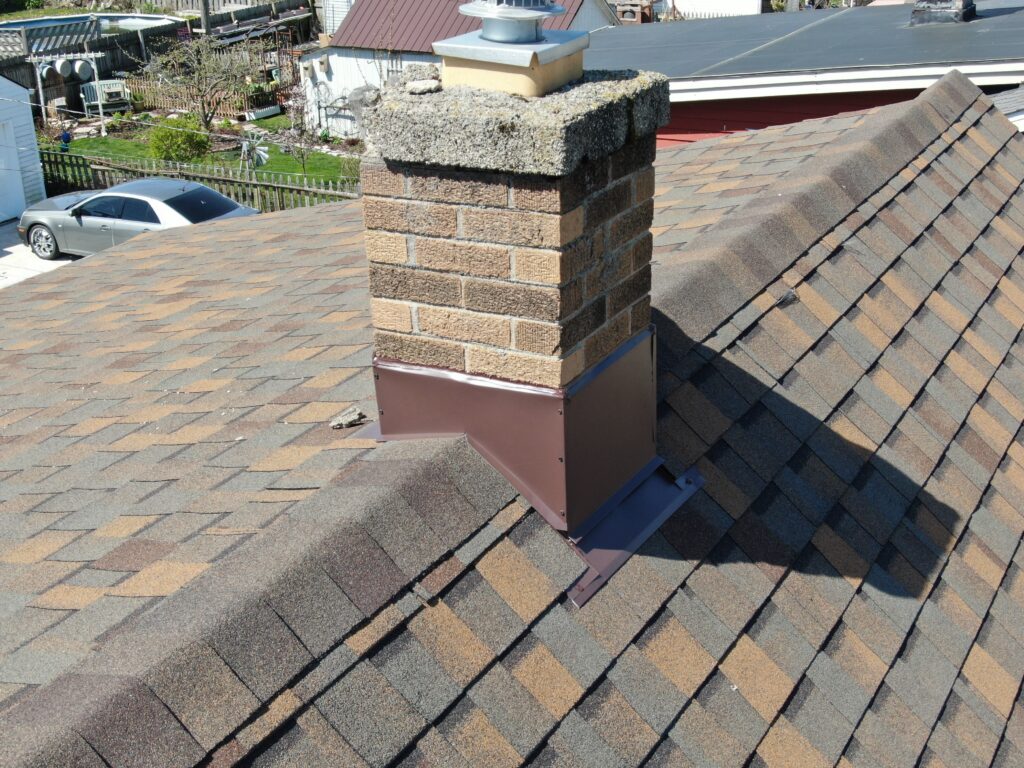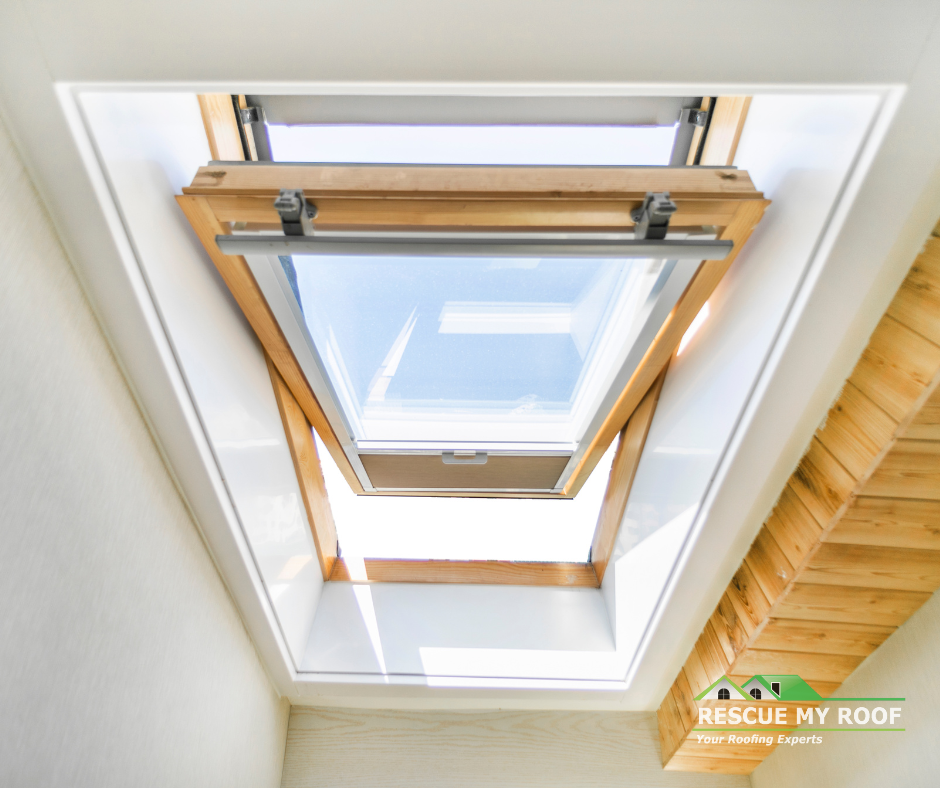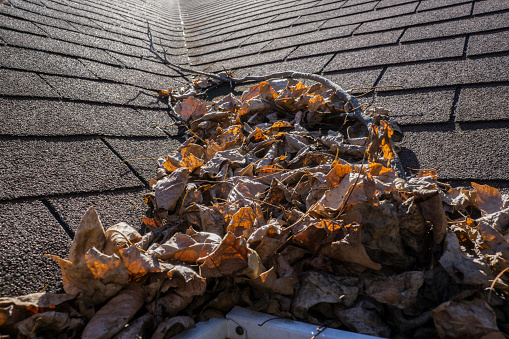6 Reasons Your Roof Leaks in Heavy Rain
Running for a bucket every time it rains is stressful for any homeowner. Knowing what’s causing it and how to fix it can be even more stressful.
You’ll never have 100 percent certainty about what’s causing a roof leak until after an inspection. However, we can explain why roofs leak in heavy rain.
Rescue My Roof has provided transparent roofing education to homeowners like you for over a decade. Now, we’ll help you determine what may be causing your roof leak.
Here are six reasons your roof leaks in heavy rain.
Why is Your Roof Leaking? 6 Potential Causes
There are many different reasons your roof may be leaking in heavy rain.
While it can be hard to diagnose where a leak is coming from, here are a few culprits.
1. Chimneys

Any time there’s heavy rain, we get calls about chimney leaks.
A chimney could leak during heavy rain for a few different reasons. The metal flashing surrounding the chimney could be rusted or pulled away from the chimney.
Additionally, saturation in the mortar joints from prolonged periods of rain can allow water to enter your home.
Depending on the material, if water comes in from the top of your chimney, the top could be cracked or rusted.
2. Rusted or Cracked Roof Flashing
We’ve already discussed how rusted chimney flashing can lead to roof leaks, but flashing surrounds other essential areas on your roof.
This makes problems with roof flashing the second reason a roof leaks in heavy rain. If you notice holes or cracks in the flashing – it’s compromised.
While this is the most common reason a roof leaks, it can also leak from improperly installed roof flashing.
Unfortunately, you won’t know the extent of the problem or if flashing is the primary reason for leaks until after a roof inspection. But no matter what, these situations require a repair or flashing replacement.
You can caulk around the flashing to seal it if you need a temporary solution. However, a replacement is best. Call a roofing contractor for an estimate.
3. Pipe Boot Failure
The third most common reason for roof leaks is when a boot around a plumbing pipe or other roof penetration fails.
A boot goes around the base of roof pipes to make them watertight. However, prolonged exposure to the sun can crack pipe boots made of rubber.
Once it cracks, water runs down the pipe into the room below it. Pipe boots last around ten years, depending on location, weather, and animals.
Pipe boots never last the entire lifespan of a roof. That’s why it’s essential to get roof maintenance to catch problems before leaks can start.
4. Improperly Driven Roofing Nails
The following reason your roof leaks in heavy rain is from popped-up nails or improperly driven roofing nails.
If a nail isn’t driven in far enough, the head of the nail works its way back up through the shingles. Rainwater catches the lifted nail as it comes down your roof and follows the nail inside your home.
It can happen with roofing and decking nails. No matter the installation method, as long as the nails hit good woof, are snug, and aren’t overdriven, you shouldn’t have a problem with leaks.
5. Skylights

Skylights can also be a cause of leaks during heavy rain.
Sometimes there’s a problem with a piece of the skylight, or a seal is worn down, and it’s time for a skylight replacement. But, the leading cause of a skylight leak is improper installation.
All it takes is for an installer not to follow the manufacturer’s installation instructions. If this happens, you’ll have to remove the cladding and flashing kit, install an ice and water shield around it, and put the flashing kit back on.
If a professional can mess this up, you can, too. Call a contractor immediately for an inspection and repair estimate if your skylight leaks.
6. Debris in Roof Valleys

Debris builds up in your roof valleys from a lack of roof maintenance. When debris sits for too long, you have the potential for leaks.
The dam of debris stops water from flowing down properly and causes pooling water to back up the roof.
When water sits long enough, it’ll find the least resistant path. It could get into your home through a backed-out nail or even underneath your shingles.
Get annual roofing maintenance and inspections to clear your roof and gutter of debris to avoid problems like leaks.
How to Prevent Water Damage from A Leak While Waiting for Repairs
If you’re waiting for roof repairs but are dealing with active leaks, buckets and tarps are your friends. Lay down a tarp over the affected area and use a bucket to catch the water.
You can also get a dehumidifier to prevent mold in a highly damp area.
Getting Roof Repairs for a Leaking Roof
Dealing with a leaking roof can be exhausting, but finding where the leak is coming from can be even more stressful.
The most common roof areas for leaks are chimneys, pipe boots, nails, skylights, and roof valleys.
While some DIY repairs, like caulking and tarps, provide temporary relief, it’s best to call a roofing contractor to assess the issue.
You can learn more about roof leaks and the damage they cause with “4 Places Where Roof Leaks Happen” and “9 Factors Impacting Roof Repair Pricing.”
Do you need roof leak repairs in Southeastern Wisconsin? Contact the experts at Rescue My Roof today to get a free estimate.


